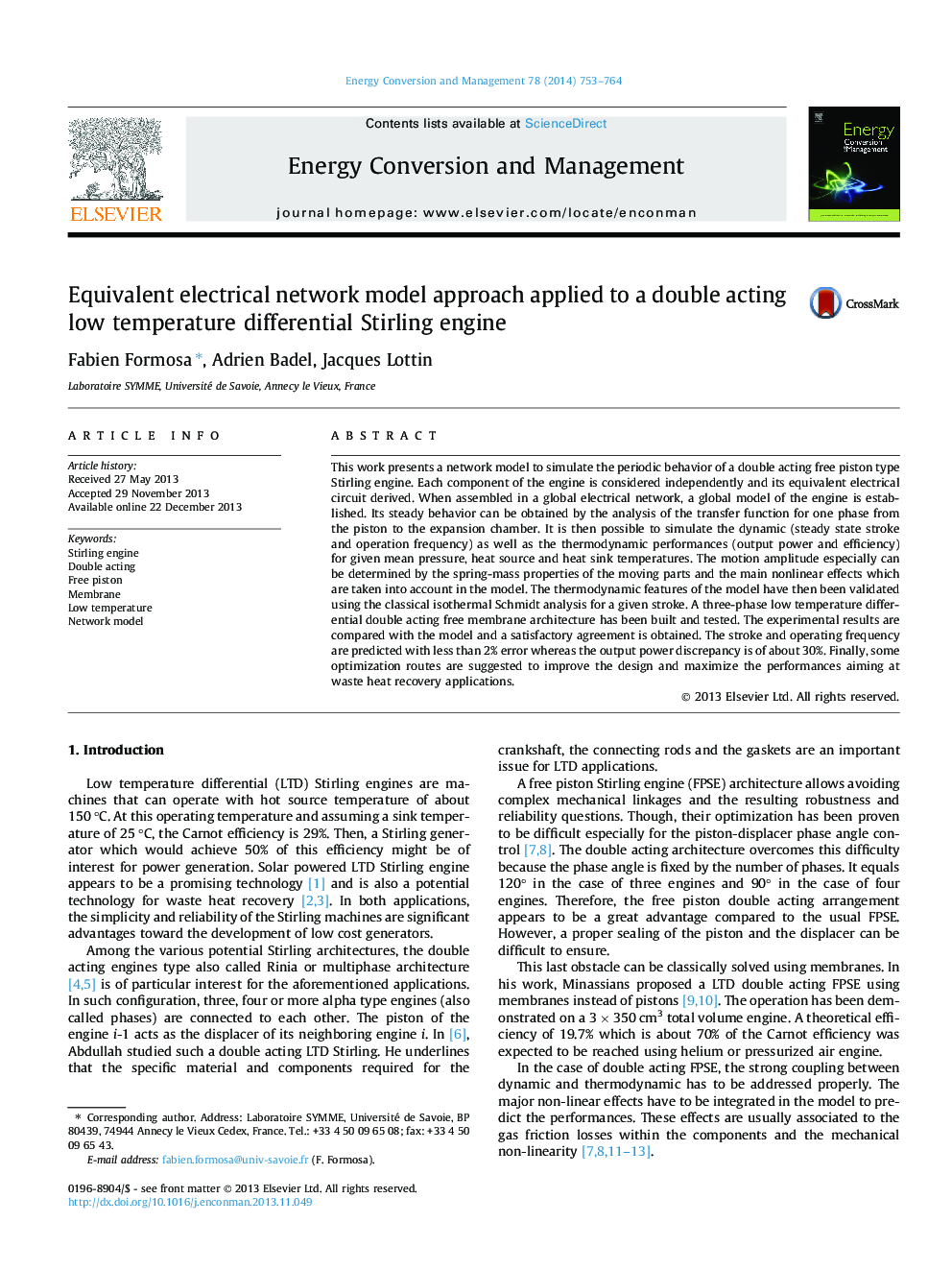| کد مقاله | کد نشریه | سال انتشار | مقاله انگلیسی | نسخه تمام متن |
|---|---|---|---|---|
| 764131 | 1462884 | 2014 | 12 صفحه PDF | دانلود رایگان |
• An equivalent electrical network modeling of Stirling engine is proposed.
• This model is applied to a membrane low temperate double acting Stirling engine.
• The operating conditions (self-startup and steady state behavior) are defined.
• An experimental engine is presented and tested.
• The model is validated against experimental results.
This work presents a network model to simulate the periodic behavior of a double acting free piston type Stirling engine. Each component of the engine is considered independently and its equivalent electrical circuit derived. When assembled in a global electrical network, a global model of the engine is established. Its steady behavior can be obtained by the analysis of the transfer function for one phase from the piston to the expansion chamber. It is then possible to simulate the dynamic (steady state stroke and operation frequency) as well as the thermodynamic performances (output power and efficiency) for given mean pressure, heat source and heat sink temperatures. The motion amplitude especially can be determined by the spring-mass properties of the moving parts and the main nonlinear effects which are taken into account in the model. The thermodynamic features of the model have then been validated using the classical isothermal Schmidt analysis for a given stroke. A three-phase low temperature differential double acting free membrane architecture has been built and tested. The experimental results are compared with the model and a satisfactory agreement is obtained. The stroke and operating frequency are predicted with less than 2% error whereas the output power discrepancy is of about 30%. Finally, some optimization routes are suggested to improve the design and maximize the performances aiming at waste heat recovery applications.
Journal: Energy Conversion and Management - Volume 78, February 2014, Pages 753–764
